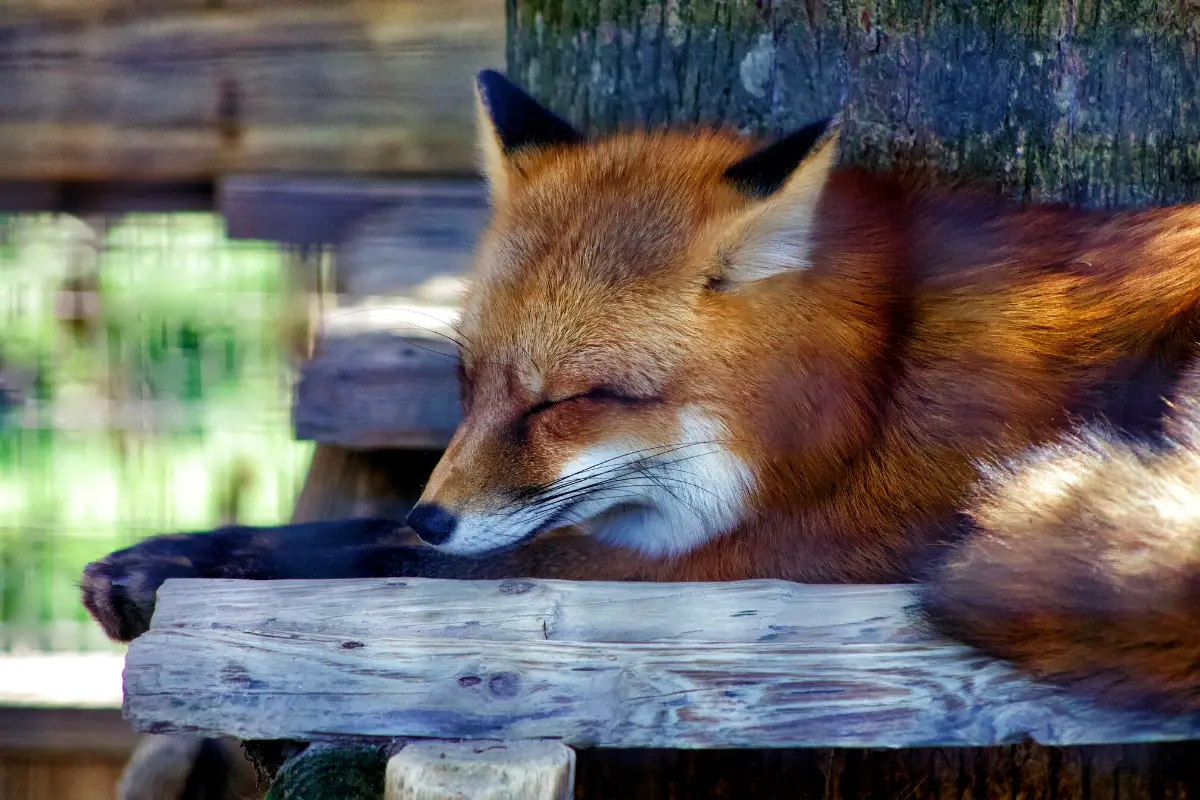Foxes have some strange behaviors and habits when it comes to sleeping. Most foxes in the wild, are nocturnal, and sleep during the day. Some foxes are not fully nocturnal and can be seen hunting in the evening time.
Where Do Foxes Sleep
Foxes sleep near their dens, out in the open, or near brush. They use their tail to curl up and stay warm while sleeping, as well as to blend in. We know that foxes build dens, but they are primarily for raising fox kits, not for sleeping.
Watch the Video
Some foxes have different sleeping behaviors, such as arctic foxes, and sometimes desert foxes. These foxes will sleep in their dens for part of the year, when the weather calls for it.
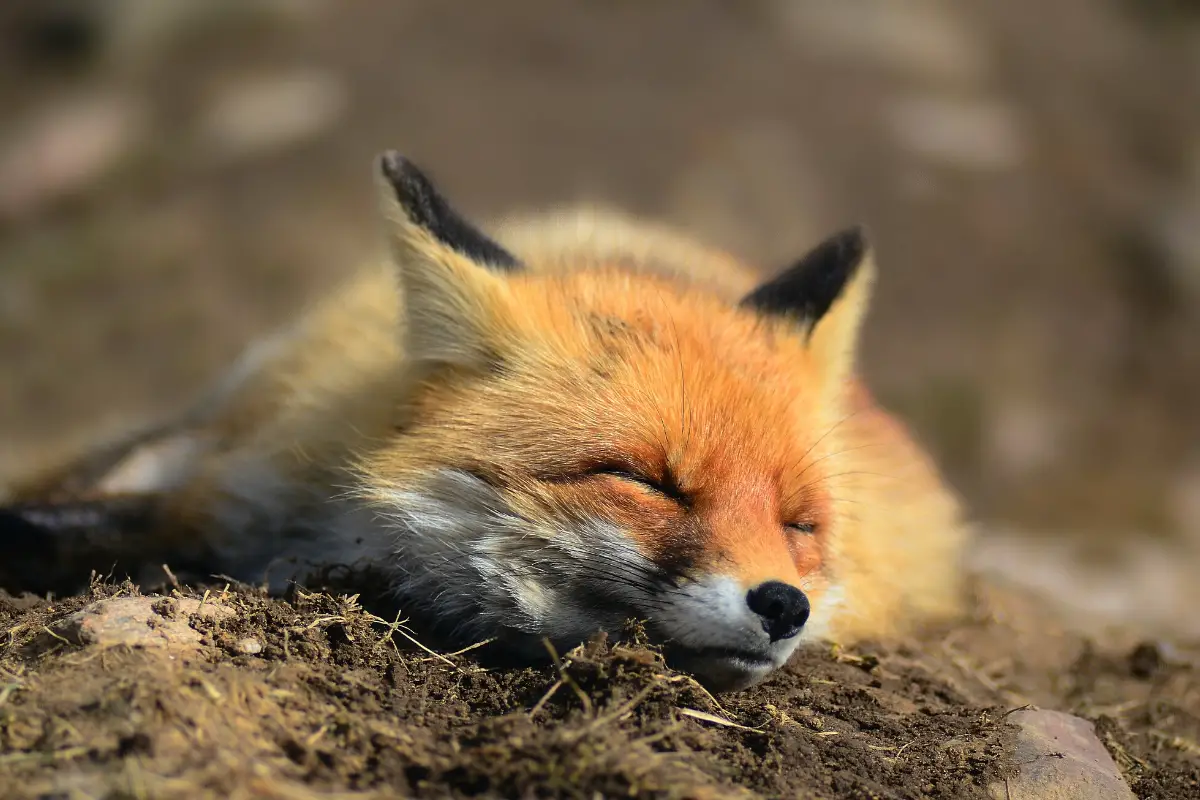
Fox Sleeping Habits
Foxes can have varied sleeping habits, depending on the type of fox, and where they live. Most foxes keep to themselves and avoid other animals as much as possible. They will sleep near their dens, or just within the den opening, to listen for predators or danger.
Foxes have multiple dens in their home-range, and they will move to what is called a “natal den” when it is mating season and time to raise their young.
The mother (vixen) stays in the den, and sleeps with the kits, while the male fox hunts, and scouts the area for danger. This is common for all types of foxes, in every region.
The baby foxes are born blind for the first two weeks, and the mother stays to protect them because they are more vulnerable to being preyed on by badgers, and other predators, that see young foxes as an easy kill.
Vixens have also been known to share their dens with other young females, from previous litters, and will sleep in the same den.
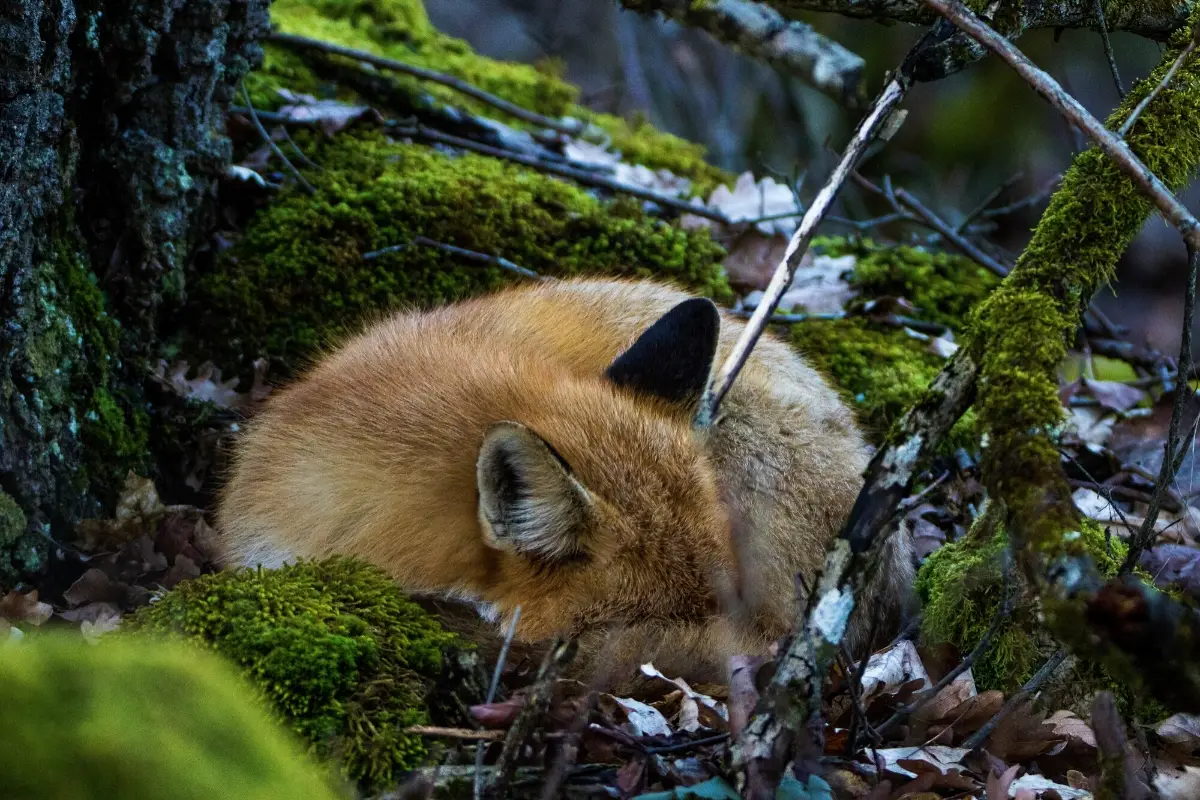
Fox Sleeping Behaviors
The fox prefers to sleep in the wide open, however, if there is danger in the area they will seek out cover, in the form of brush, or trees. Foxes hate to be wet and will dig temporary burrows, or take shelter in a rabbit hole, to get out of the rain.
Foxes will also jump into a burrow occupied by another animal, that would normally be their prey if there is a larger predator in the area. This behavior is shared by many animals in the wild, who do what it takes to survive. They have also been known to take short rests, while out hunting, in random burrows that are called “fox rests.”
Foxes have unique sleeping positions, that can tell you a lot about how they are sleeping. They will sleep in different directions, curled up to the left, or the right. These positions are called “directions of rest.”
Studies have shown, that some foxes prefer to sleep curled up to the left, and when they are in that position, it is a good sign, that they are sleeping very deeply.
The studies were done on foxes in captivity and showed that male foxes have the preference to sleep on the left side, while females did not seem to have any particular preference. It is also believed that sleeping on the left side, seemed to be a dominant behavior.
The amount of breaths that a fox takes while sleeping, has also been monitored and noted, by watching foxes in captivity. An average fox takes about 16-20 breaths per minute while sleeping. Fennec foxes, on the other hand, will take many more breaths, as a mechanism to cool their bodies down in the desert heat.
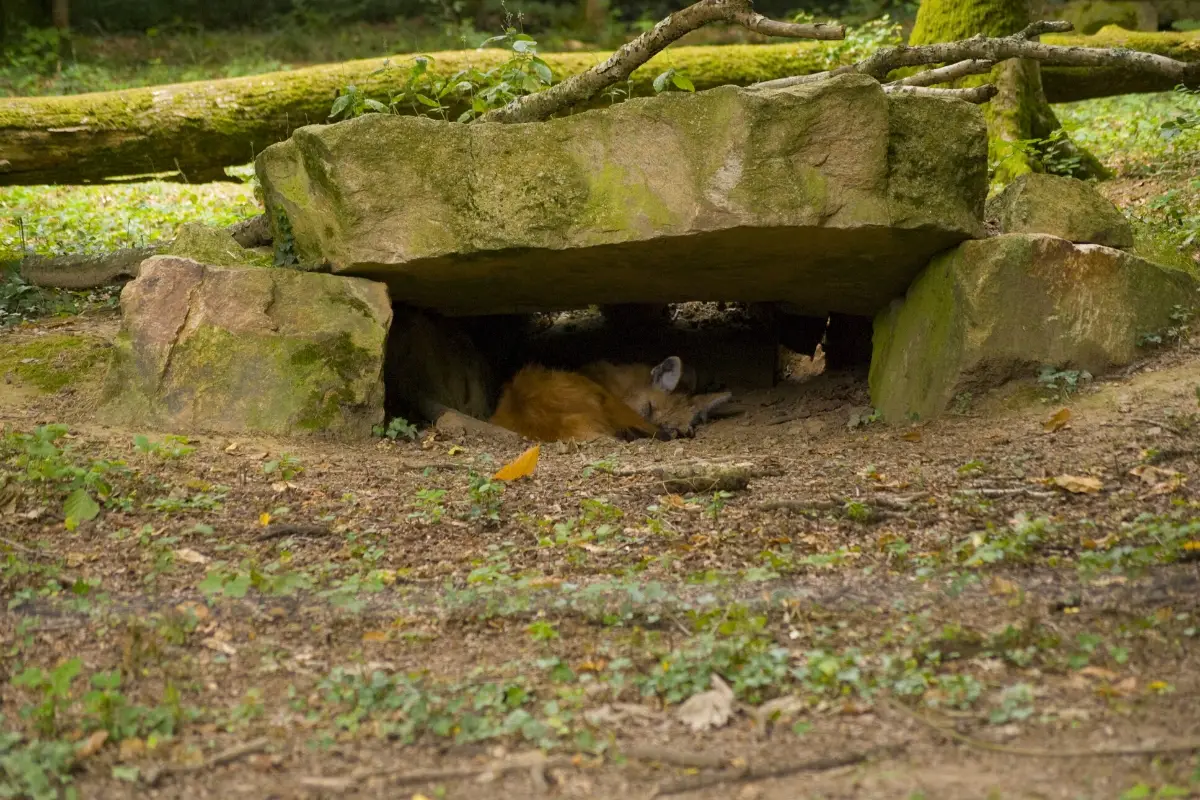
Where do Fennec Foxes Sleep?
Fennec foxes have different sleeping behaviors than most foxes. They live in the desert, where temperatures get extremely hot. For this reason, they will stay in the den for most of the day, sleeping.
Then they go out at night, since it is cooler, to hunt, and to scout the area for prey. Their dens are deep, and long, and provide a cool space for them. Many of their dens have multiple entrances, that make it easy to hide if a predator is about.
Fennec foxes have very large ears. Their ears help to alert them if danger is near, or if there is prey nearby. They will often wake from their slumber if anything nearby startles them.
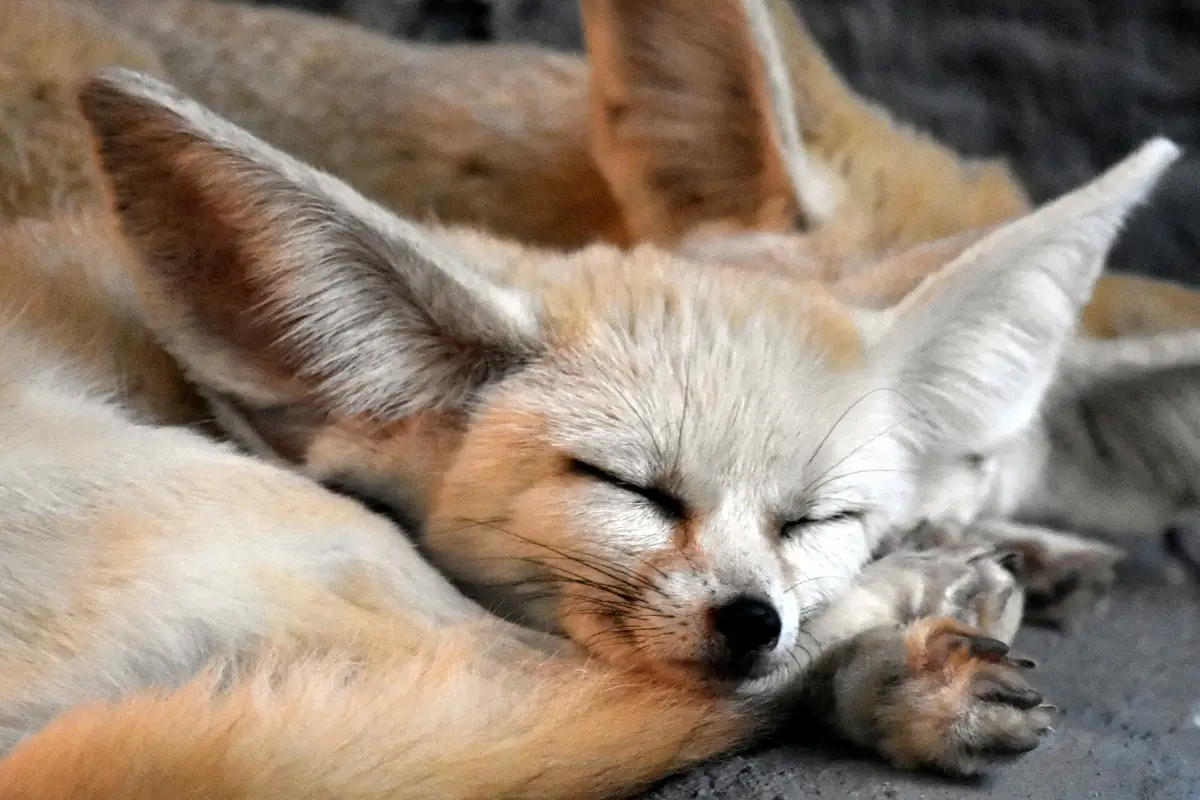
Where do Arctic Foxes Sleep?
Arctic foxes, like their desert fox relatives, have adapted the way they sleep, depending on the weather and location. When the weather is extremely harsh they will sleep in their dens. They build their dens deep under the snow and burrow into the ground.
Just like igloos, the snow keeps the fox dens insulated from the extreme cold conditions. Arctic foxes have large tails, that they curl around themselves to stay warm. They have been known to strategically cover their noses with their tails while they sleep, to protect them from the cold.
In the warmer months, they sleep outside and will find areas with vegetation, to hide in. Some arctic foxes migrate into northern parts of Canada, where it is warmer, to have their kits, in their natal dens.
The female arctic fox sleeps in the den, along with the fox kits, to raise them, and teach them how to survive, before they make their way back to the arctic.
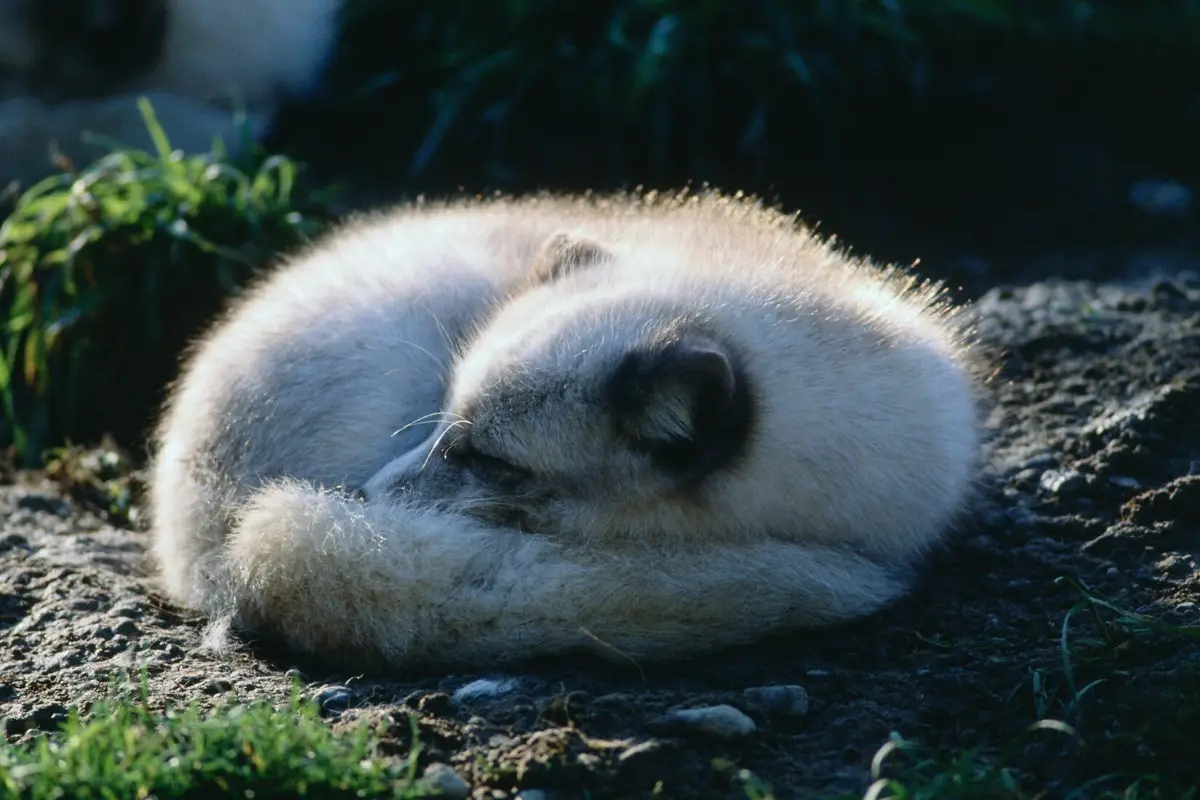
Where do Urban Foxes Sleep?
Urban foxes have been known to sleep anywhere that they can get some privacy. Foxes are solitary creatures and prefer to be left alone. This can be hard in a city, where there are constantly loud noises, and humans, that are coming and going.
In an urban setting, you might find a fox sleeping in someone’s garden, under their house, or in an abandoned lot. Like desert foxes and arctic foxes, the urban fox adapts to its surroundings and has changed their normal behavior to survive.
Although they still prefer to sleep during the day and hunt at night, it is not uncommon to see an urban fox in the daytime.
How Much do Foxes Sleep?
Foxes in the wild sleep more than 8 hours a day. They avoid the daytime as much as possible and will snooze until the sun goes down. The average red fox sleeps about 10 hours a day.
Each type of fox has slightly different sleeping hours, however, most sleep at least 8 hours. Many foxes will sleep, and wake, multiple times if they hear another animal creeping around their den.

“When every inch of the world is known, sleep may be the only wilderness that we have left.”
— Louise Erdrich
See more about Fox Behavior.
Frequently Asked Questions
Where do foxes sleep in the day?
Since foxes are nocturnal, that means they sleep during the day. They sleep near brush, or in low areas, near their den, so to not be seen by predators.
Where do foxes sleep in London?
London has many foxes that live in the city. They sleep under houses, in wooded lots, and anywhere that they can sleep without being seen.
Do Foxes Sleep Underground?
Foxes rarely sleep underground. They prefer to sleep under the stars. Vixens will sleep in the den, underground, when they are having their kits.
Do Foxes Sleep in Trees?
Foxes have been known to sleep in trees. Gray foxes can climb trees, because of their partially retractable claws, however, even red foxes have been seen sleeping in trees.

